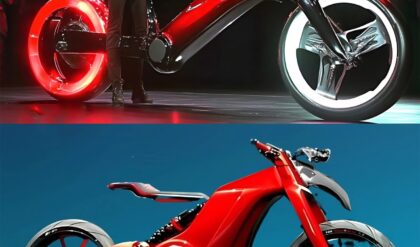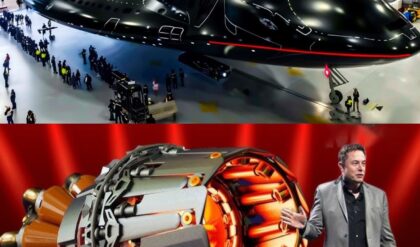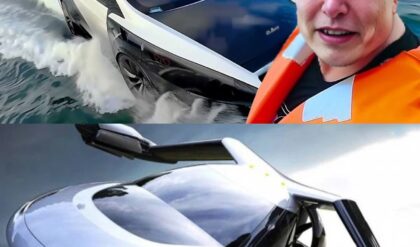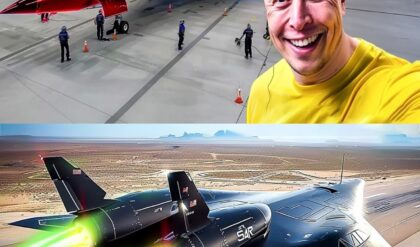Pak 38 Was First Used in Operation Barbarossa

The Pak 38 (L/60) (5 cm Panzerabwehrkanone 38 (L/60)) was a 50 mm caliber German anti-tank gun, developed by Rheinmetall-Borsig AG in 1938.
It succeeded the 3.7 cm Pak 36 and was later superseded by the 7.5 cm Pak 40. Its distinctive curved gun-shield set it apart from the typical WWII anti-tank guns, which usually featured either a single flat or a combination of two angled and one flat gun-shield plates, designed for manufacturing simplicity.
Spanish Civil War
During its testing in the Spanish Civil War, the 37mm PaK 35/36 anti-tank gun was effective, but German officials recognized its limitations against the emerging heavier armored tanks. In 1935, Rheinmetall in Germany initiated the development of a 50mm (2-inch; 5-cm) caliber variant, designated PaK 37.
 PaK 38 – Nijmegen Bridge, Holland. Image Credit: Curmo
PaK 38 – Nijmegen Bridge, Holland. Image Credit: Curmo
Dissatisfied with the original low-velocity performance, the German authorities had Rheinmetall enhance the design by incorporating a longer L/60 barrel, leading to the development of the PaK 38. The German Army approved this model for production, which started in 1939, and the units were deployed with troops in 1940, missing the early Western Front campaigns.
The PaK 38 was integrated into anti-tank platoons and first saw combat during the 1941 German invasion of the Soviet Union, known as “Operation Barbarossa.”
During the German invasion of Soviet territories, the PaK 38 crews received a new type of ammunition, the Panzergranate 40 APCR, or “AP40”, which was inspired by captured Czech and Polish designs and reintroduced for use by the German Army. The AP40 featured a dense tungsten core that enhanced its penetration ability, especially effective against the Soviet KV-1 heavy tank.

When the T-34/76 medium tanks appeared on the Eastern Front, the PaK 38 armed with the AP40 rounds was the only weapon capable of breaching their thick armor. However, limited availability of the PaK 38 restricted its impact, prompting the Germans to supplement their defenses with captured French 75mm guns.
T-34 Challenged the PaK 38
Although the emergence of the T-34/76 challenged the PaK 38, making it somewhat obsolete, the gun continued to serve until the war’s end in 1945, even after being superseded by larger-caliber anti-tank guns. The PaK 38 boasted a maximum range of nearly 3,000 yards, a caliber of 50x419mm R, and measured 10 feet, 5.5 inches in length, with a barrel length of 7 feet, 9.7 inches.
It featured a baffled muzzle brake to mitigate recoil, and its carriage doubled as a stabilizing platform during firing. The complete system weighed 2,341 pounds for transport and 1,000 pounds in firing position, offering a 65-degree traverse and an elevation range from -8 degrees to +27 degrees.
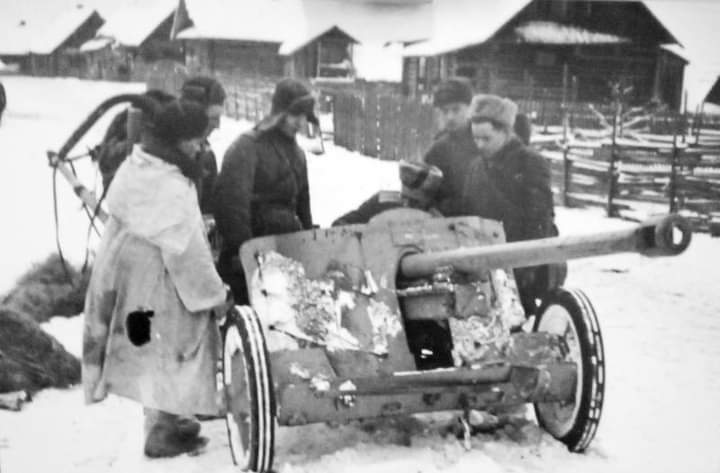 PaK 38, captured by the partisans of the 6th Leningrad partisan brigade in battle with German troops near the village of Ostrovno. 1943
PaK 38, captured by the partisans of the 6th Leningrad partisan brigade in battle with German troops near the village of Ostrovno. 1943
Muzzle velocities varied from 3,870 feet per second for armor-piercing rounds to 1,805 feet per second for high-explosive rounds. It operated on a semi-automatic action with a manually operated feed system, allowing a firing rate of about 13 rounds per minute, and was equipped with Z.F. 3×8 sights.
Five crew members operated the PaK 38, taking cover behind a sloped, curved armor plate comprising two sections spaced about 1 inch apart, each 0.15 inches thick. This armor offered frontal protection, while additional cover had to be sought from natural or man-made defenses like earthworks or sandbag barriers.
 The gun’s full designation was 5 cm Panzerabwehrkanone 38 (L/60). In this case, 5cm refers to the gun’s diameter (5cm or 50mm).
The gun’s full designation was 5 cm Panzerabwehrkanone 38 (L/60). In this case, 5cm refers to the gun’s diameter (5cm or 50mm).
The gun featured steel, rubber-tired wheels for high-speed towing and dolly wheels on the trail leg spades for extra maneuverability, although these were sometimes detached. Positioned on a tubular, light alloy split-trail carriage, the weapon locked into place for firing, ensuring stability through its torsion bar suspension.
Panzerjager Carriage
Easily towable by a variety of vehicles, the PaK 38’s design minimized its frontal target profile, contributing to its battlefield efficacy. The gun’s success led to adaptations for aircraft, including a version with an automatic feed mechanism for the jet-powered Messerschmitt Me 262 “Schwalbe,” aiming to counter enemy bombers.
PaK 38, captured by the partisans of the 6th Leningrad partisan brigade in battle with German troops near the village of Ostrovno. 1943
Additionally, there were proposals to adapt this aircraft-based cannon for ground anti-aircraft defenses. The PaK 38 was also modified for tank armaments and shore defenses along the “Atlantic Wall” and was mounted on Panzerjager carriages to create improvised self-propelled guns (SPGs) for infantry support, with so many produced that the British repurposed captured units as a contingency.
As mentioned, by the start of Operation Barbarossa in June 1941, the Pak 38 emerged as one of the limited armaments effective against the T-34 medium tank’s 45 mm (1.8 in) sloped armor at close distances. It was loaded with Panzergranate 40 APCR rounds, which had a hard tungsten carbide core, aiming to breach the thicker armor of the KV-1 tank.
Despite being superseded by more potent weapons, the Pak 38 continued to serve the Wehrmacht throughout the war, proving its enduring utility.The carriage of the Pak 38 was adapted for other guns as well, including the 7.5 cm Pak 97/38 and the 7.5 cm Pak 50.
In March 1943, Romania procured 110 Pak 38 units. These guns served in the Romanian Armed Forces until they were phased out in 1954, replaced by the 57 mm anti-tank gun M1943 (ZiS-2).
The PaK 38 was adapted as the primary armament for tanks, several of which were later repurposed as coastal fortifications along the “Atlantic Wall.”
Additionally, the PaK 38 was mounted on the back of Panzerjager tracked vehicles, transforming them into makeshift self-propelled guns (SPGs) for infantry support. The production of these systems was so extensive that the British managed to capture a significant number, retaining them for potential emergency use. By war’s end, around 9,500 PaK 38 units had been produced, many remaining in service until the conflict’s conclusion.
